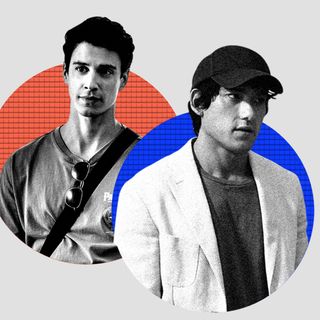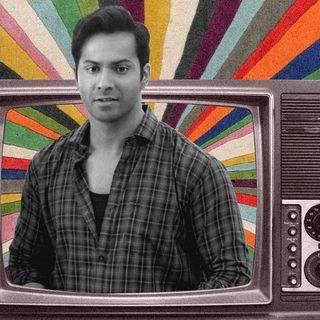
‘Goblin Mode’ – Oxford’s Word of the Year – Signals the Era of the Anti‑Aesthetic
“[Goblin mode] is about a complete lack of aesthetic. Because why would a goblin care what they look like? Why would a goblin care about presentation?”

“Goblin mode” — referring to “a type of behavior which is unapologetically self-indulgent, lazy, slovenly, or greedy, typically in a way that rejects social norms or expectations” — has been declared as the Oxford word of the year for 2022. The result was decided based on public polling for the first time ever — as opposed to being chosen by a small group of people, like it happens every year. “Goblin mode” beat “metaverse” and “#IStandWith” through a landslide victory of 93%.
The term itself signals a shift in our priorities in a post-2020 world where, arguably, people are less hesitant to defy social norms and expectations in a bid to prioritize their comfort and sanity.
“[Goblin mode] embraces the comforts of depravity: spending the day in bed watching [reality TV] on mute while scrolling endlessly through social media, pouring the end of a bag of chips in your mouth, downing Eggo toaster oven waffles with hot sauce over the sink because you can’t be bothered to put them on a plate, [and] leaving the house in your pajamas and socks only to get a single Diet Coke from the bodega,” The Guardian had noted in March. “At some point in the stretch of days between the start of the pandemic’s third year and the feared launch of world war three, a new phrase entered the zeitgeist, a mysterious harbinger of an age to come.”
Goblin mode, then, appears to be an act of self-preservation.
But why the term “goblin”? In the words of Dave McNamee, “[Goblin mode] is about a complete lack of aesthetic. Because why would a goblin care what they look like? Why would a goblin care about presentation?” McNamee is, reportedly, a self-proclaimed “real-life goblin,” whose tweet demonstrating what “goblin mode” means went viral in February, introducing the term to the broader public imagination.
Related on The Swaddle:
Pandemic Isolation Has Been a Relief for Many Who Don’t Fit into Society’s Norms
The fact that “goblin mode” won by a popular vote — taking the views of 340,000 English speakers around the world into consideration — further attests to the magnitude of this cultural shift. “People are embracing their inner goblin, and voters choosing ‘goblin mode’ as the Word of the Year tells us the concept is likely here to stay,” noted Casper Grathwohl, president at Oxford Languages, adding that the term probably resonated with people who are feeling “a little overwhelmed at this point.”
Indeed, the feeling of being overwhelmed — both physically and emotionally — has become rather commonplace as we continue to emerge from the global health crisis. Perhaps, it’s the deteriorating mental health — either due to the mass trauma of living through the pandemic, or the burnout from working through the worst crisis many have witnessed in their lifetimes — that has manifested as a perpetual state of teetering on the edge of being overwhelmed.
“People are feeling overwhelmed, uncertain, anxious, helpless, frustrated, stressed, and exhausted. With the worsening of — and gradual decline in mental health — we are also seeing anger, depression, insomnia, and increased substance abuse, as well as a reported increase in isolation,” noted Dr. Lisa MacLean, a psychiatrist. “It’s going to take time for people to feel comfortable again… We are going to have to go through an uncomfortable stage before we get comfortable again… History has shown that the mental health impact of disaster outlasts the physical impact, suggesting that today’s elevated mental health need will continue well beyond the coronavirus outbreak itself.”
This also raises the question: did living in isolation during the pandemic, where many didn’t have to cater to an external gaze of social life, inadvertently acquaint people with the pleasures of the goblin mode? As past reports suggest, social isolation also led people to shed conventional norms of beauty as the pressure to look presentable suddenly vanished. Having experienced the joy of sheer abandon, perhaps, people feel the need to switch back every now and then.
Related on The Swaddle:
Surviving the Pandemic Has Made Us Kinder, More Aware of Mental Health. Will It Last?
“Seemingly, [the term, “goblin mode,”] captured the prevailing mood of individuals who rejected the idea of returning to ‘normal life,’ or rebelled against the increasingly unattainable aesthetic standards and unsustainable lifestyles exhibited on social media,” the statement announcing its win read.
Not only does the emergence of the goblin mode challenge social norms, but also makes people’s collective disdain for social expectations rather apparent. So much so, that the website PC Gamer even put out a fervent appeal, urging people to vote for the term, saying: “Go vote for taking care of yourself and having joy in rejection of society’s stifling norms… Vote for the energy of trying to enjoy yourself rather than better yourself.”
And, as it turns out, people did — registering their love for the goblin style of living, in the process.
As Arundhati Roy, a novelist, had told the Financial Times in 2020, “[P]andemics have forced humans to break with the past and imagine their world anew. This one is no different. It is a portal, a gateway between one world and the next.” Goblin mode appears to have emerged from this very portal.
Devrupa Rakshit is an Associate Editor at The Swaddle. She is a lawyer by education, a poet by accident, a painter by shaukh, and autistic by birth. You can find her on Instagram @devruparakshit.
Related


Woe Is Me! “My Friend Cut Me Off. How Do I Move On?”
